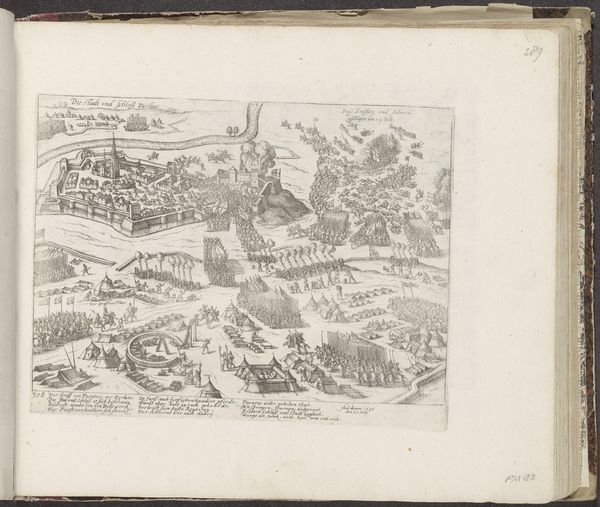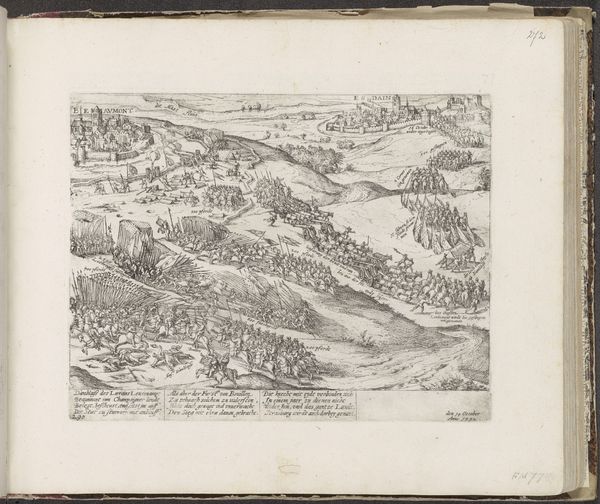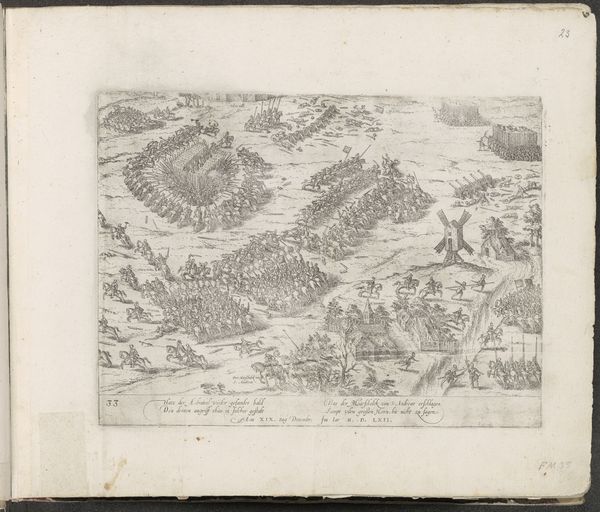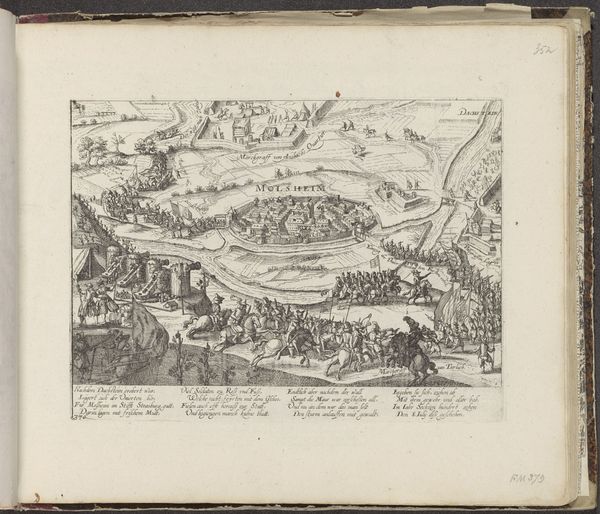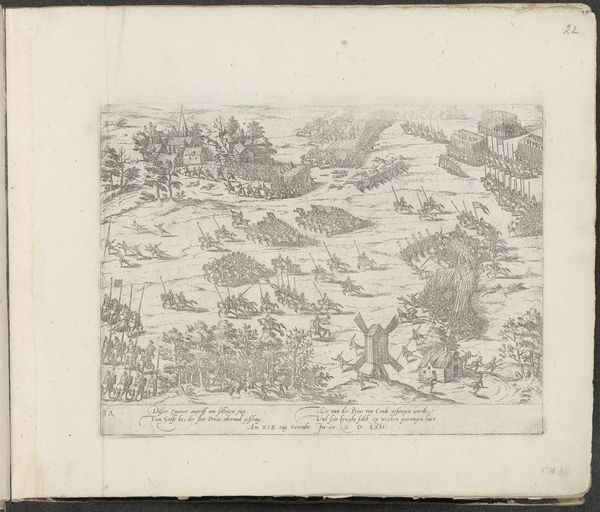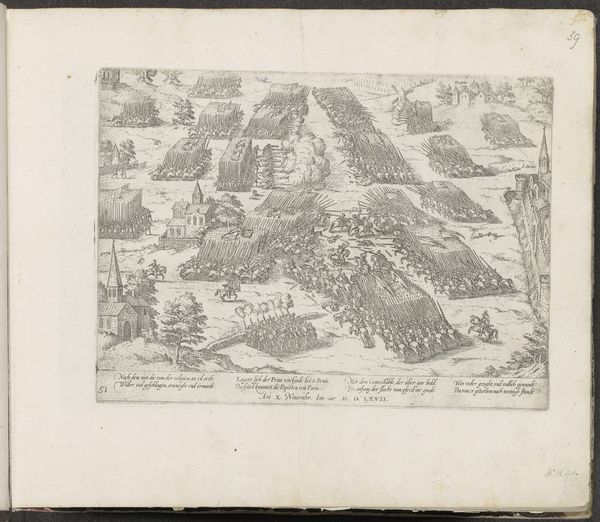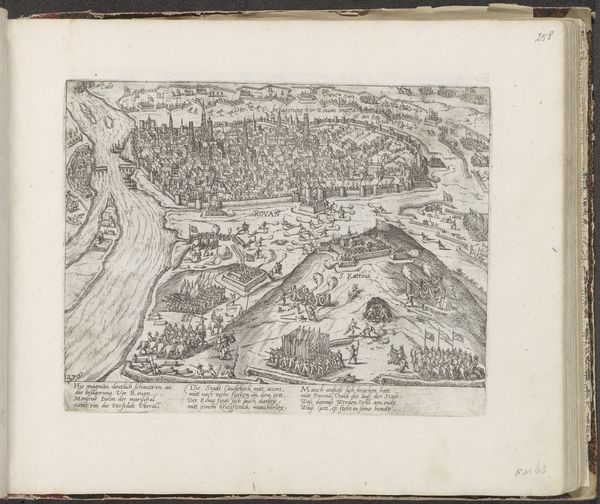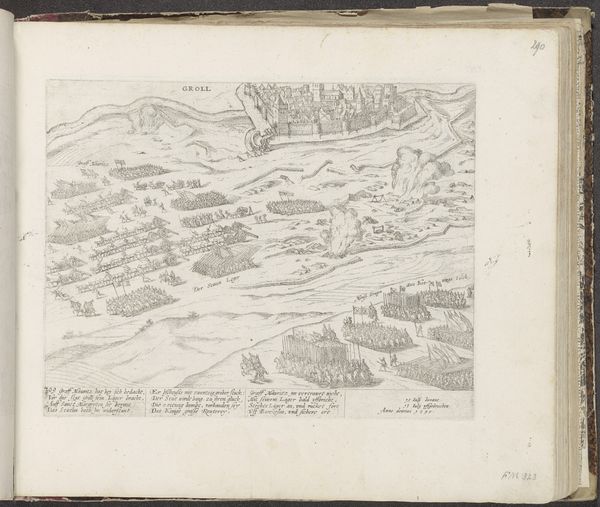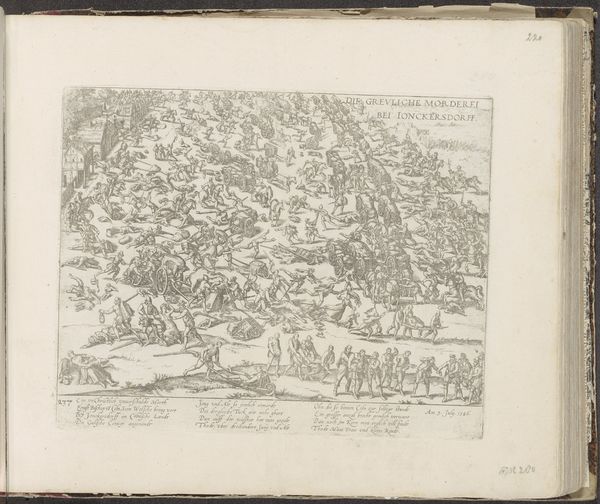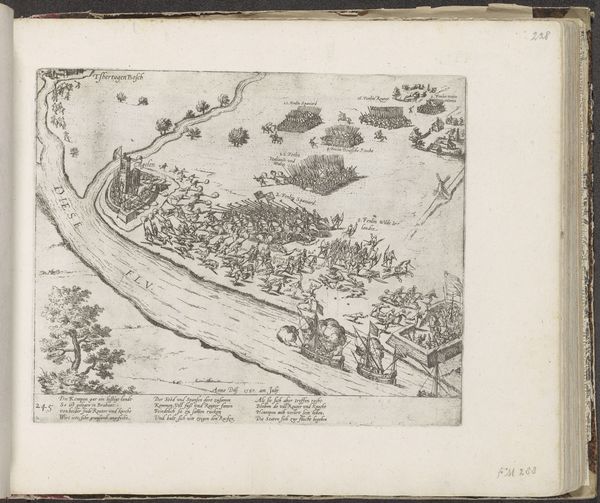
drawing, print, etching, ink
#
drawing
# print
#
etching
#
landscape
#
mannerism
#
ink
#
history-painting
Dimensions: height 212 mm, width 279 mm
Copyright: Rijks Museum: Open Domain
Curator: Look at this etching, "The Battle of Nieuwpoort, 1600," created between 1600 and 1602 by Frans Hogenberg. It's a history painting, rendered in ink. Editor: It’s chaotic! Tiny figures locked in conflict spread across the landscape like an invading swarm. I see ships, fortifications...the composition itself feels agitated. Curator: Consider Hogenberg’s labor, the deliberate act of etching—a process rooted in skilled handiwork. This wasn't about singular genius; prints facilitated dissemination of knowledge to a burgeoning public, influencing opinion. Think about the paper too—where did the materials originate? Who produced the ink? What sociopolitical conditions enabled its circulation? Editor: That's all relevant, but let's not overlook how the Mannerist style informs the chaotic feeling. The landscape's recession feels compressed, amplifying the sense of frenzy, the density of detail, the lines...they draw my eye across a tapestry of conflict. The placement of light and dark creates visual texture that reflects the disarray of warfare. Curator: Absolutely. Yet, knowing this print circulated amidst the Eighty Years' War alters our view. Hogenberg didn't just create an image; he fashioned propaganda. The availability of mass produced images had everything to do with a shifting political environment. How did these visuals help the Dutch Republic shape its national identity, even in marketplaces? The relationship between maker, viewer, and production means informs how this art functioned then and how it should be understood now. Editor: But by studying the formal choices, by acknowledging the use of linear perspective to map military positioning, the deliberate use of hatching to describe textures of war, the composition—we can see how Hogenberg conveys information effectively but also elicits specific responses through visual techniques. Curator: True. However, the intention of an individual artisan exists within a much broader web. We need to investigate the social, economic, and even ecological implications surrounding its production, circulation, and consumption. Editor: Still, by isolating the elements within its visual field, the way shapes repeat and relate...a clear message emerges! But I admit there's deeper richness as well when the picture is expanded to a comprehensive survey of process and labor. Curator: Indeed. Ultimately, considering the intertwined layers gives us richer ground for appreciating both craft and intent.
Comments
No comments
Be the first to comment and join the conversation on the ultimate creative platform.

